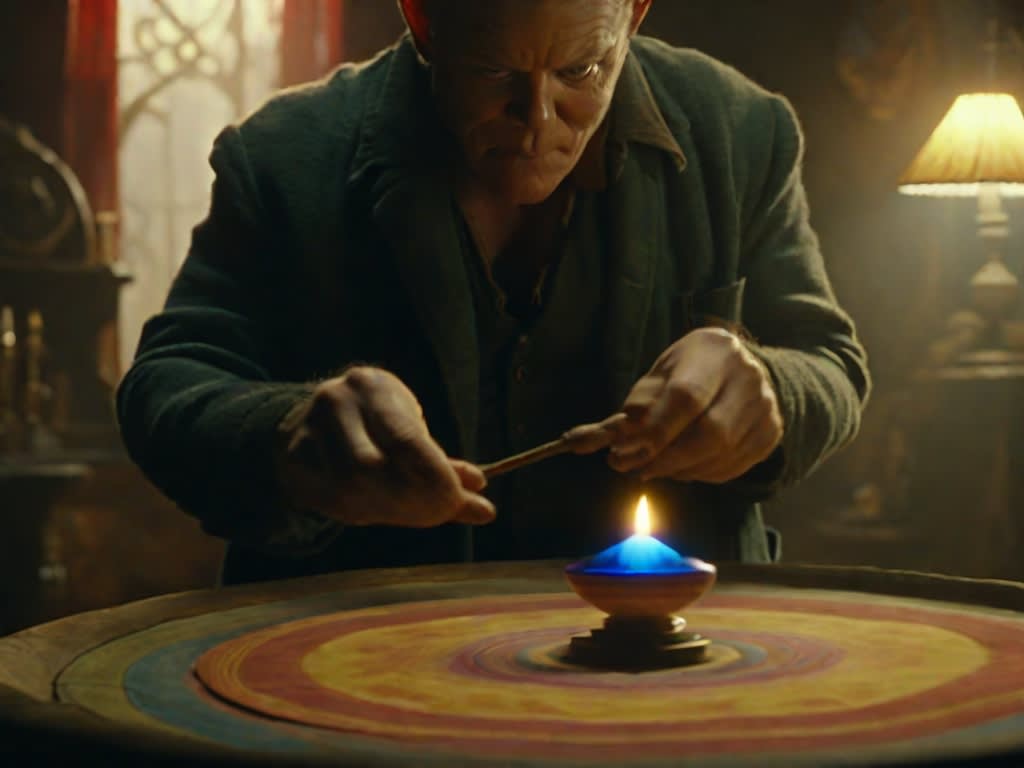Inception's Ambiguous Ending: A Dive into the Depths of Dreams
Inception's Labyrinth of Dreams: Deciphering Reality in Christopher Nolan's Enigma

"Inception" (2010), directed by the visionary Christopher Nolan, is a cinematic masterpiece that continues to captivate audiences with its intricate plot and mind-bending narrative. At the heart of the film lies one of the most debated and puzzling endings in cinematic history, leaving viewers to question whether it was reality or a dream. The enigmatic conclusion of "Inception" has sparked countless discussions and theories, each attempting to unravel the mysteries that lie within the depths of the film's narrative.
The film revolves around Dom Cobb, portrayed by the brilliant Leonardo DiCaprio, a skilled thief who specializes in extracting information from the subconscious minds of his targets through their dreams. With a team of skilled individuals, Cobb delves into the intricate and surreal landscapes of the human subconscious. Their mission takes a compelling turn when they are tasked with planting an idea into the mind of a powerful businessman, Robert Fischer, using a process known as "inception".
It's the final act of the film that leaves viewers in a state of perpetual wonderment. Inception's closing sequence is pivotal as it teeters on the edge of ambiguity, ultimately challenging our perception of reality and dreams.
At the heart of this debate is the spinning top, Cobb's personal totem. A totem is a small object that is used to distinguish between the dream world and reality. Cobb's totem is a spinning top, a device that, in a dream, would spin indefinitely, defying the laws of physics. In reality, it would eventually topple. Throughout the film, the top serves as Cobb's reality check.
The final scene of the film takes place in Cobb's home, where he is reunited with his children. Cobb is shown spinning his totem and then walking away from it to embrace his children. The camera lingers on the spinning top as it appears to wobble slightly but never definitively falls. The film ends with this tantalizing visual cue, leaving the audience to ponder whether Cobb's reality is, in fact, a dream.
The Reality Argument
One interpretation of the ending asserts that Cobb is, indeed in the real world. Proponents of this theory argue that the camera's focus on the spinning top is misleading. They posit that Cobb's emotional resolution, his ability to finally let go of his guilt and reunite with his children, is the true indication that he is in reality.
In this interpretation, the spinning top is not Cobb's true totem. Instead, his wedding ring serves as the real indicator. Throughout the film, whenever Cobb is in a dream, he wears his wedding ring, and when he is in reality, he does not. In the final scene, Cobb is not wearing his wedding ring, suggesting that he is not in a dream.
This theory also highlights that Cobb no longer carries the burden of his wife's death and the guilt that haunted him throughout the film. His ability to let go and move on signifies a resolution to his internal conflict. In this context, the spinning top's wobble at the end is simply a tantalizing, open-ended conclusion meant to intrigue and provoke discussion, rather than a definitive answer.
The Dream Argument
On the flip side of the debate, there are those who argue that Cobb's final moments are still occurring within a dream. They contend that the absence of the wedding ring is not a reliable indicator, as there are instances in the film where Cobb wears the ring while in a dream. The absence of the ring, they argue, is not a concrete proof of reality.
For proponents of the dream theory, the spinning top's behavior is the central piece of evidence. They believe that the film's final shot, with the top wobbling but not falling, is a signal that Cobb's reality is a dream. In the dream world, the top would never fall, perpetually spinning as long as the dreamer desired. The film concludes with this tantalizing hint that Cobb may not have returned to reality.
The dream argument also delves into the concept of limbo, a deep layer of dream state where time stretches infinitely. Cobb and his wife, Mal, spent what felt like decades in limbo, constructing their own world. This concept blurs the boundaries between dream and reality, as limbo can feel just as real as the conscious world.
Christopher Nolan's Ambiguous Intent
The brilliance of Christopher Nolan's storytelling lies in his ability to create narratives that defy easy interpretation. Nolan himself has spoken about the ending of "Inception" and has intentionally left it open to interpretation. He has mentioned that he knows the answer but has chosen not to reveal it because he wants the audience to engage in discussions and form their conclusions.
Nolan's decision to keep the ending ambiguous speaks to the film's central themes. "Inception" is not merely a heist film within the dreamscape; it's a journey of self-discovery and emotional healing for Cobb. It's about confronting guilt, letting go of the past, and finding redemption. The ending is less about whether Cobb is in a dream or reality and more about his emotional resolution and personal growth.
This ambiguity also mirrors the experience of dreaming itself. In dreams, the boundaries between reality and the subconscious are blurred, and we often experience surreal and enigmatic sequences that defy logic. By keeping the ending open-ended, Nolan captures the essence of dreams and the way they can be both perplexing and emotionally resonant.
The Importance of the Totem
While the debate over the spinning top continues, it's crucial to recognize the role of totems in the film. Totems are personal objects that allow individuals to distinguish between the dream world and reality. Cobb's spinning top and the wedding ring are examples of totems, and they serve as symbols of his inner turmoil and guilt.
Cobb's emotional journey throughout the film centers on his guilt over the death of his wife, Mal. This guilt has haunted him and seeped into his subconscious, blurring the lines between his perception of reality and his dreams. Cobb's inability to let go of Mal
and his guilt has been the root of his turmoil. In the film's climax, he finally confronts his guilt, accepts it, and finds the strength to move on.
The spinning top and its uncertain fate represent Cobb's ability to break free from his guilt and embrace the present moment, whether it's in a dream or reality. The top's final wobble signifies the balance between his ability to experience life, to savor the beauty of the fleeting moment, and to overcome the haunting specters of his past.
The Magic of Interpretation
"Inception" is a testament to the power of interpretation in storytelling. Its enigmatic ending has sparked conversations, debates, and discussions among viewers, critics, and fans for over a decade. The film's enduring appeal lies in its ability to keep audiences engaged and invested in its mysteries.
Ultimately, "Inception" is not a film with a fixed, concrete ending. It is a narrative that challenges our perceptions, explores the depths of the human subconscious, and delves into the complexity of dreams and reality. The film's conclusion is not about providing a clear answer but encouraging viewers to contemplate the nature of dreams, guilt, and redemption.
As we journey through the labyrinthine corridors of "Inception," we are reminded that the power of cinema lies not in delivering answers but in provoking questions. It is in these questions and discussions that the magic of interpretation thrives, ensuring that "Inception" remains an everlasting enigma in the realm of storytelling.
And so, the spinning top continues to wobble, defying a definitive conclusion and inviting us to explore the labyrinth of our own interpretations. In the end, perhaps it's not about whether Cobb's reality is a dream or not; it's about the profound impact of his journey, both within the dreamscapes and in the recesses of our minds.
About the Creator
Adrian Wordsmith
Embark on a literary adventure with me, a passionate writer and storyteller. Let's unlock mysteries, explore emotions, and find solace in the power of words. Join the journey!






Comments (1)
I've bot watched this movie but I think I have to because this was so fascinating!